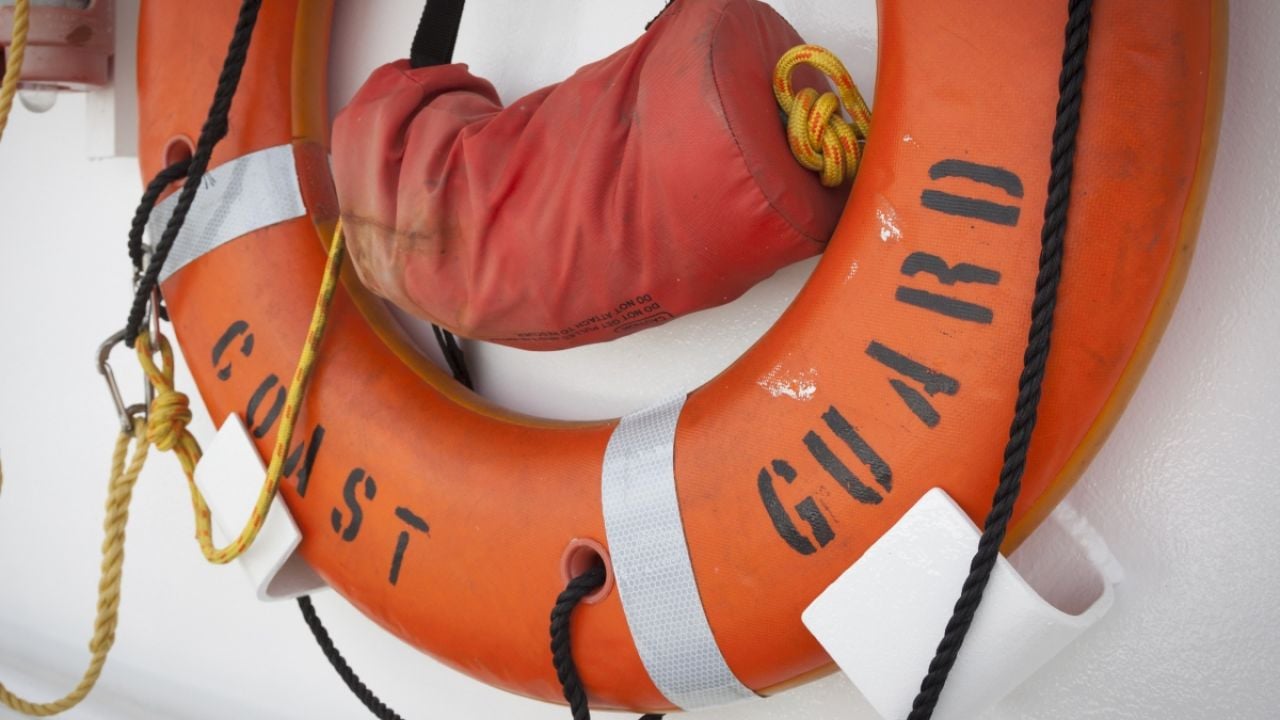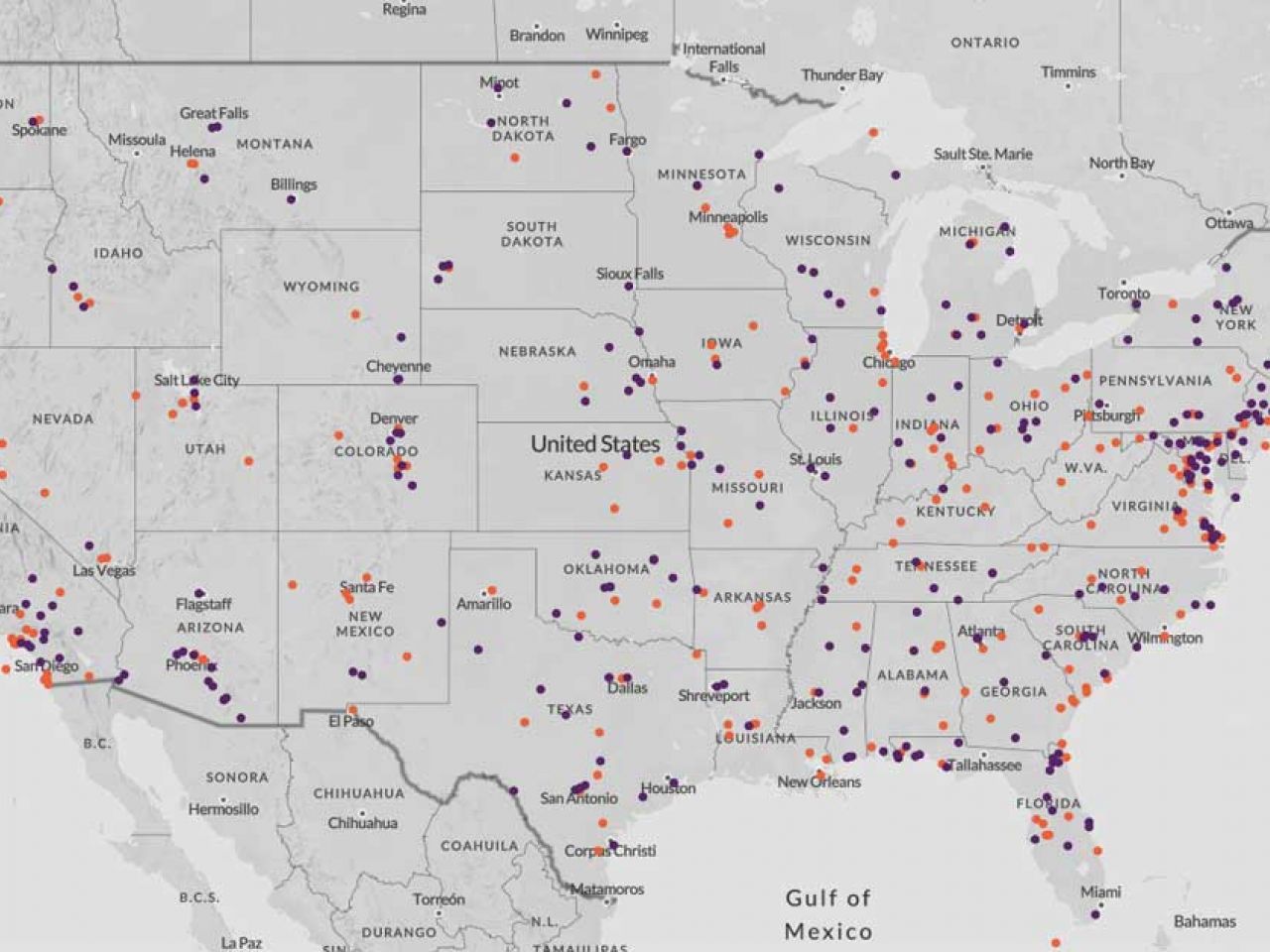
At least 24 Coast Guard bases across the U.S. are now suspected of contamination by the toxic fluorinated “forever chemicals” known as PFAS, according to EWG’s updated analysis of records from the departments of Defense and Homeland Security.
From Alaska to Florida, the two dozen U.S. Coast Guard Air Stations are among the 708 military installations where PFAS contamination has been found or is suspected. At many of these sites, AFFF, or the firefighting aqueous film-forming foam made with PFAS, is likely to have been used.
Through Freedom of Information Act requests and public military databases, EWG has so far confirmed PFAS in the tap water or groundwater at 390 military installations.
The Coast Guard is part of the military, but it is overseen by the DHS. Just this year DHS began reviewing its use of AFFF at the hundreds of facilities it manages.
According to the DHS’s fiscal year 2022 budget request, the department suspects there are over 400 locations controlled by the department that “currently or historically used AFFF.”
The Department of Defense began in 2016 to create a list of affected installations and launch cleanup efforts, but it’s waited more than 5 years to get started. This might mean thousands of Coast Guard service members and hundreds of communities neighboring their installations across the U.S. could still be exposed to PFAS.
Groundwater at and around military bases has been shown to have some of the highest levels of PFAS in the country. EWG has found PFAS detections at 17 installations that were above 1 million parts per trillion, or ppt, in drinking water, which is far above the Environmental Protection Agency’s recently updated health advisory of less than 1 ppt.
PFAS have contaminated the drinking water of scores of military bases. But many nearby communities continue to drink contaminated water. EWG has found 69 bases that have had PFAS in drinking water at levels above the EPA guideline.
PFAS contaminate the blood of every American and have been linked to serious health problems, including cancer and harm to the reproductive and immune systems. Americans are exposed to dozens of PFAS every day. Because they never break down and they build up in our blood and organs, they are often known as “forever chemicals.”
Health risks from AFFF
The military, including the Coast Guard, disproportionately exposed military service members and their families to PFAS pollution with the use of PFAS-laced AFFF.
DOD officials have understood the risks of AFFF since the early 1970s, when Navy and Air Force studies first showed it was toxic to fish. In the early 1980s, the Air Force conducted its own animal studies of AFFF, and in the early 2000s, the maker of PFOS, the main ingredient in AFFF, exited the market. In 2001, a DOD memo concluded the main ingredient in AFFF was “persistent, bioaccumulating and toxic.”
But the DOD waited until 2011 to warn service members about the risks of PFAS, well after the Coast Guard was transferred from the DOD to DHS. The DOD has also been slow to clean up legacy PFAS pollution and switch to PFAS-free alternatives to AFFF, and it is unclear what steps, if any, DHS has taken to adopt these alternatives.
To help protect service members, their families and nearby communities, since 2016, the DOD has followed the EPA’s earlier lifetime health advisory of 70 ppt for PFAS in drinking water. One step it has taken is to provide bottled water and filters to neighboring households whose water was contaminated by the Pentagon’s use of PFAS.
But DOD officials have not committed to following the EPA’s lead by updating PFAS advisory levels for its bases or nearby communities with PFAS contamination.
Congress can accelerate cleanups
Although the DOD continues to provide some protection to service members and alternative water sources to surrounding communities, the DHS and Coast Guard have yet to take any such actions.
Congress must do more to speed up the cleanup of legacy PFAS contamination. It must increase funding for programs like the Defense Environmental Restoration Program and Coast Guard Environmental Health programs, and designate PFAS as “hazardous substances” under the Superfund toxic cleanup law. Taking these steps will help to ensure that PFAS manufacturers pay their fair share of cleanup costs.
Congress should also do more to alert active and retired service members and their families about their exposure to PFAS and the health risks they face as a result.




